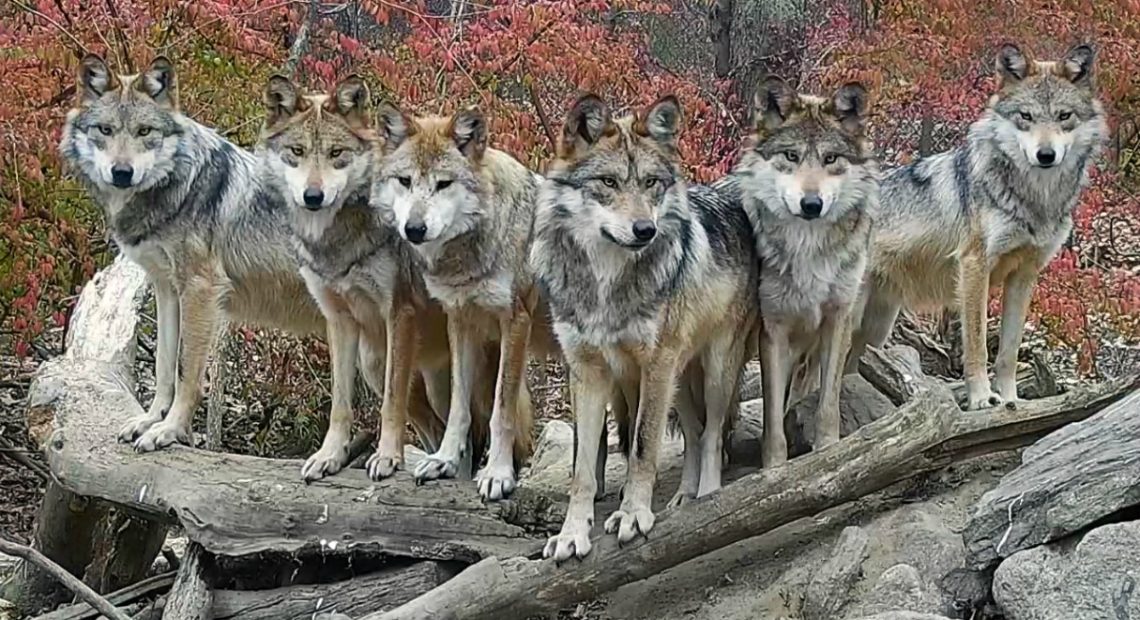

Wolves and humans have a complicated relationship.
We often vilify the “Big Bad Wolf” in fiction and real life, but we’re also consistently fascinated by these smart, social mammals, and we haven’t always clashed.
Many people don’t understand wolves as well as they think because domesticated dogs can be very different from their wild relatives, who haven’t spent millennia learning to love us.
Also due to the decimation of wild wolves by humans in recent centuries, most people alive today have little or no personal experience with wolves aside from dogs.
Wolves can be dangerous, of course, but attacks on humans are rare, as wolves generally don’t see us as prey.
In hopes of shedding more light on what wolves are really like outside fables and fairy tales, here are a few unexpected facts you may not know about these unique animals.
Wolves Are Family Animals
Gray wolves usually live in packs of six to 10 individuals, led by a dominant breeding pair.
You may have heard someone refer to these pack leaders as “alpha wolves,” or males and females who supposedly gain dominance by fighting within their packs, eventually becoming the group’s leaders and exclusive breeders. This view is misleading as it doesn’t accurately describe the way a wolf pack works.
A renowned biologist, L. David Mech explained on his website that “alpha wolves” are actually just parents and the other pack members are their offspring.
Mech added that wolves often mate for life, and their family unit can include a mix of juveniles and young adults from multiple breeding seasons.
They’re Skilled Communicators, Too
Wolves do howl at night, but contrary to popular belief, these soulful calls have nothing to do with the moon.
They convey long-distance messages to other wolves, who may be able to hear them from up to 10 miles away.
Howling can help wolves assemble their pack, locate missing pack members, or defend territory, among other purposes.
Wolves also make other vocalizations to communicate, such as growling, barking, whining, and whimpering.
They use body language, too, including eye contact, facial expressions, and body posturing.
These silent communication channels can be useful when hunting — a “gaze signal,” for example, may help wolves coordinate during group hunts without making sounds that would alert their prey.
Wolves’ powerful sense of smell also plays a key role in their communication, letting them share information through multiple types of scent marking, including raised-leg urination, squat urination, defecation, and scratching.
With so many things to know and discover about wolves, let’s explore many of the fun facts there are out there!
Scroll through and learn all about wolves!
AVERAGE WEIGHT
Females: 60 to 80 pounds, Males: 70 to 110 pounds
AVERAGE HEIGHT
26 to 32 inches (at the shoulder)
AVERAGE LENGTH
Females: 4.5 to 6 feet (tip of nose to tip of tail), Males: 5 to 6.5 feet
LENGTH OF LIFE
Up to 13 years in the wild (usually 6 to 8 years), Up to 16 years in captivity
AVERAGE FOOT SIZE
4 inches wide by 5 inches long
FUR COLOR
Gray, but can also be black or white
NUMBER OF TEETH
42 Teeth
BREEDING SEASON
February to March
GESTATION PERIOD
63 days
WEIGHT AT BIRTH
1 pound
LITTER SIZE
4 to 6 pups
PACK SIZE
2 to 30 or more
Average pack size
5 to 8
PACK TERRITORY SIZE
25 to 150 square miles in Minnesota
300 to 1,000 in Alaska and Canada
AVERAGE TRAVEL SPEED
5 miles per hour
SPRINTING SPEED
36 to 38 miles per hour for short distances
COMMON FOOD
Ungulates: hoofed animals like deer, moose, caribou, elk, bison, and musk-oxen.
MAIN THREATS TO SURVIVAL
Loss of habitat due to destruction, development and encroachment by humans; persecution by humans.
Maxwell Oyekunle
(Culled from treehugger.com, davemech.org and wolf.org)